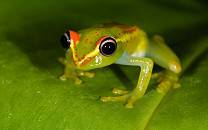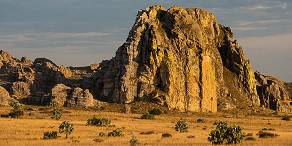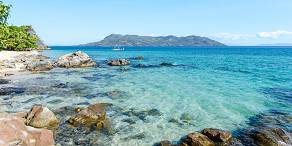
Climate Chart Antananarivo – 1,280m / 4,199ft
Madagascar has a tropical climate. Winter and summer are at opposite times compared to Europe, North America and Asia. November to April is the hot Wet season, and May to October is the mild Dry season. There are, however, wide regional variations and the Dry season can begin in April or May, depending on the area. Another example is that the highlands of the interior are cooler and less humid than the coastal areas. Rainfall is high in the east and very low in the southwest.
Antananarivo’s Climate Compared to Madagascar’s Beaches & Parks
Madagascar’s capital city, Antananarivo (Tana), is in the central highlands. Andasibe-Mantadia (comprising Analamazaotra and Mantadia National Parks) and Ranomafana National Parks, some of the country’s most popular parks, have a similar climate. The eastern part of Madagascar, which includes Masoala National Park, Palmarium Reserve and Nosy Mangabe Special Reserve, experiences more rainfall and can be affected by seasonal cyclones from January to March. The west of the country is overall drier and sees more distinct Wet and Dry seasons. Parks in this region include Ankarafantsika and Bemaraha National Parks, Ankarana Special Reserve and Kirindy Forest. The driest and hottest of all is the south of the island, which includes Berenty Private Reserve, Ifotaka Forest, Tsimanampetsotsa National Park and Cap Sainte Marie Special Reserve. Madagascar’s most popular beach destination, Nosy Be, has a hot, tropical climate year-round with regular downpours from December to March.
Madagascar’s capital city, Antananarivo (Tana), is in the central highlands. Andasibe-Mantadia (comprising Analamazaotra and Mantadia National Parks) and Ranomafana National Parks, some of the country’s most popular parks, have a similar climate. The eastern part of Madagascar, which includes Masoala National Park, Palmarium Reserve and Nosy Mangabe Special Reserve, experiences more rainfall and can be affected by seasonal cyclones from January to March. The west of the country is overall drier and sees more distinct Wet and Dry seasons. Parks in this region include Ankarafantsika and Bemaraha National Parks, Ankarana Special Reserve and Kirindy Forest. The driest and hottest of all is the south of the island, which includes Berenty Private Reserve, Ifotaka Forest, Tsimanampetsotsa National Park and Cap Sainte Marie Special Reserve. Madagascar’s most popular beach destination, Nosy Be, has a hot, tropical climate year-round with regular downpours from December to March.
Dry Season May to October – Winter
 View Photos
View Photos
Conditions in the Dry season are cool and humidity is low. Rain is very sporadic. July is the coolest month with an average high of 20°C/68°F and an average low of 11°C/52°F.
- May – This is a shoulder month. Rainfall dwindles. Afternoons are pleasant with temperatures reaching 24°C/75°F, but evenings and early mornings are cooler with temperatures around 14°C/57°F.
- June, July, August & September – It cools down to temperatures of around 22°C/72°F in the daytime and nights are cold at 12°C/54°F. It doesn’t rain very often.
- October – It starts to warm up slightly to an average daytime temperature of 26°C/79°F. Nights are less chilly at 14°C/57°F. Rain increases at some point in the month.
Dry Season Photos
Wet Season November to April – Summer
 View Photos
View Photos
The Wet season months are humid and warm, but because of the altitude, it never gets really hot in the interior. It rains a lot and waterproof clothing is essential. Daytime temperatures average 26°C/79°F.
- November – This is the beginning of the rainy season, so don’t forget your waterproofs. It warms up a little and daytime temperatures reach an average of 27°C/81°F.
- December, January & February – In December, the rainy season really kicks in and there are heavy downpours most days. Conditions are warm and very humid.
- March & April – Rain decreases over this period, although March can still be very wet. In the daytime it gets to around 26°C/79°F and at night temperatures hover around 17°C/63°F.





